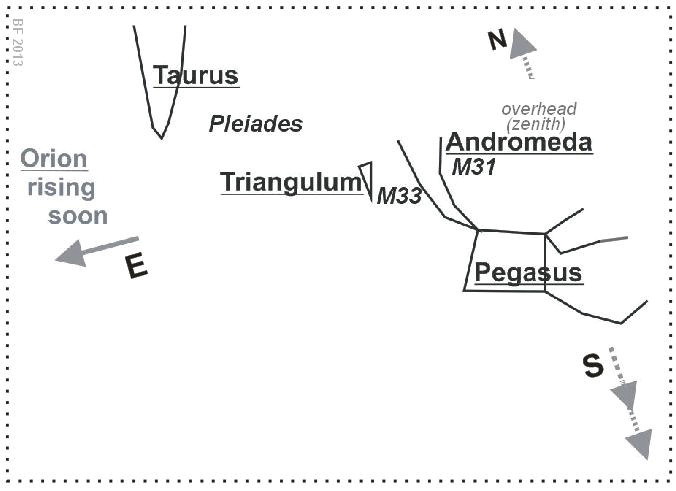When the city east of the Rockies (Calgary) was much smaller, it was possible to see the Milky Way from within that city. A special treat was spotting the Andromeda Galaxy, M31.
Close by was galaxy M33 over near Triangulum, but that I didn’t spot until years later. Try as I might, M33 eluded me – until I changed an eyepiece to a wide field of view. I scanned slowly back and forth again. Something was there! After several more sweeps to be sure and as my eyes got used to the near-mirage, there it finally was. I had been looking right through it!
The wider view, including a darker background, revealed its subtle presence. Stargazing experience grew, and other night sky features emerged in the dark overhead. A very useful, but strange-at-first habit helped — looking a bit away from a charted object to actually see it! Eye structure doesn’t help us see faint objects straight on at night. Also, the more one looks, the more one’s brain seems to process better the patterns and contrasts that first observing misses.
When the big city draws me eastward, often I return to our valley at night. Moonlit nights through Kootenay National Park are fascinating. When it is dark, however, I find (and you may too) habits from dark sky watching help make the trip safer. There are the obvious tips (for observing and for driving) of looking sideways from sudden bright lights, even closing one eye momentarily, although reducing depth perception, to keep it at least somewhat dark adapted (this is not a function of the irise, but rather the photochemicals involved in the retinae). My seeing has become able to readapt quickly after momentary bright lights, perhaps from years of deliberately asking my brain to process faint contrasts as soon as it can.
Lately, I’ve added a technique some troops and searchers recommend: slowly scanning dark areas over and over in small figure eights, which some find gets around certain night vision problems and illusions. I seem to catch distant eye reflections from deer a bit sooner. The more I scan the ditch and trees, the more certain dim features become familiar, so I might spot something unusual.
One surprise, however, was what looked like an eye of something invisible standing absolutely still on the highway two minutes north of Vermillion Crossing. It didn’t move one bit as I got closer. I slowed then swerved at the last moment… and the night-time moth went by to the right!
Further on, your traveller stopped at Kootenay Crossing to enjoy faint stars rising over Split Peak while, overhead, the Milky Way watched us in turn.
